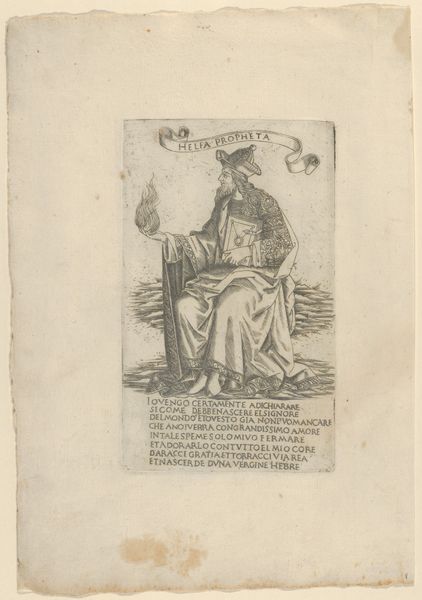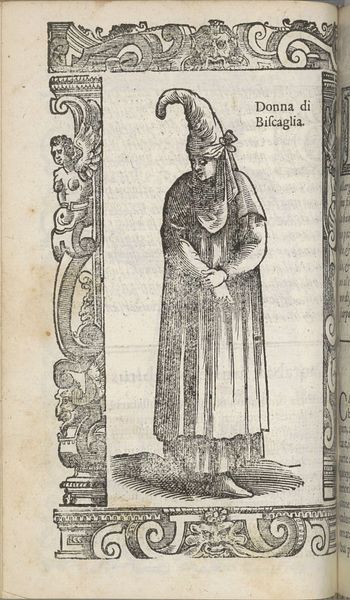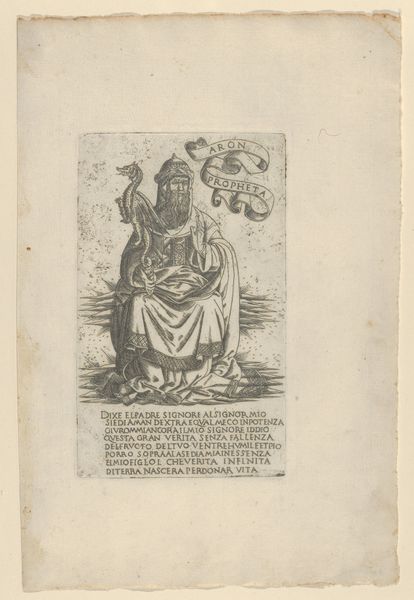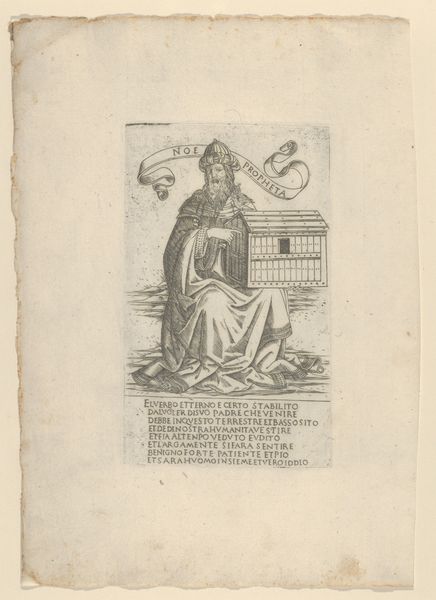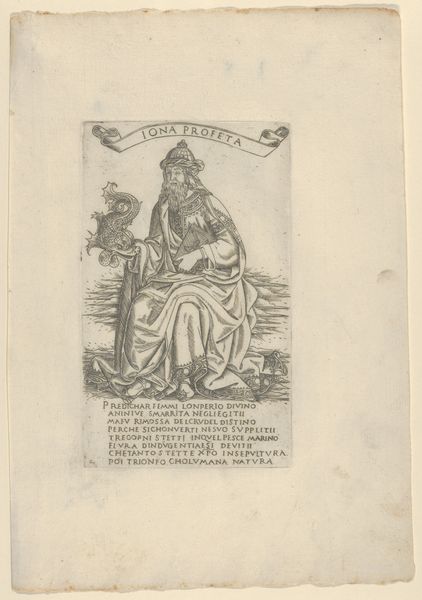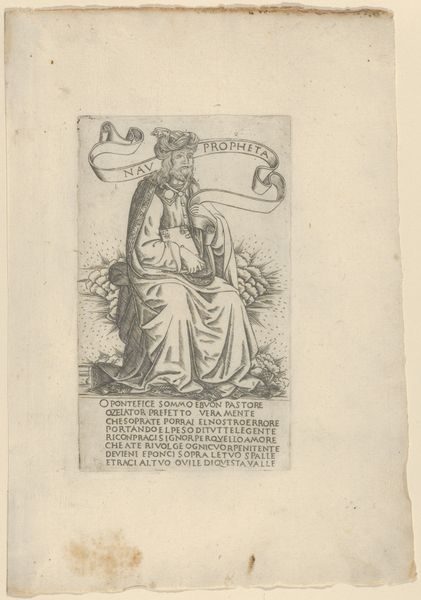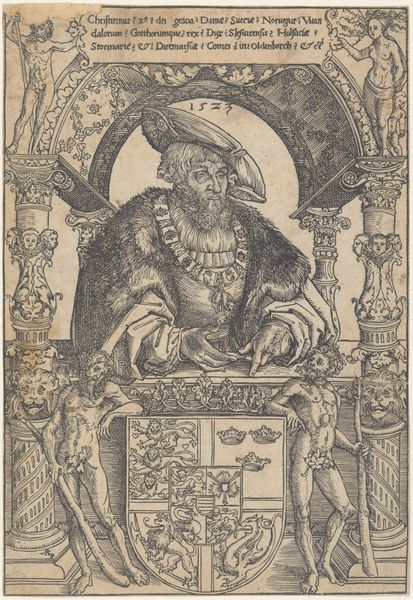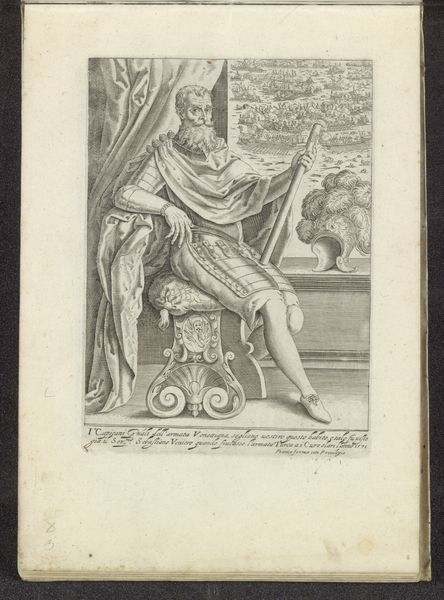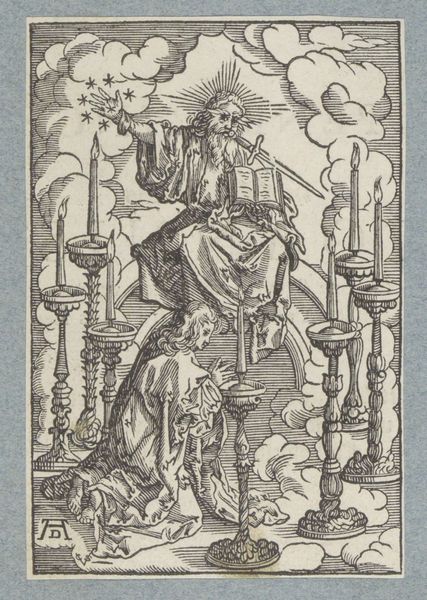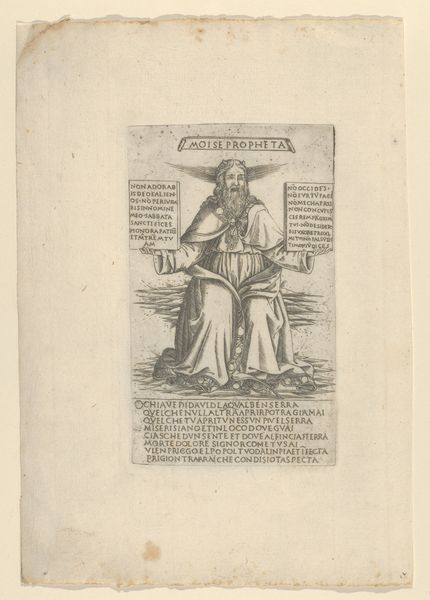
drawing, print, woodcut, engraving
#
portrait
#
drawing
#
medieval
# print
#
woodcut
#
history-painting
#
northern-renaissance
#
italian-renaissance
#
engraving
Dimensions: Overall: 7 7/8 x 5 1/2 in. (20 x 14 cm)
Copyright: Public Domain
Curator: This is a page from "Eyn new kunstlich boich," specifically Page 2 verso, crafted by Peter Quentel in 1529. It's an exquisite example of a woodcut print. Editor: It strikes me immediately as very… stark. The monochromatic rendering and detailed line work lend an imposing air to the central figure. A very deliberate sense of power and authority. Curator: Precisely. Observe the figure enthroned—Charles V, Roman Emperor. The composition is meticulously structured: the Emperor framed by architectural elements, flanked by heraldic crests and putti. His gaze is unwavering, and the sword serves as an iconic visual marker. Note also the globe held in his left hand: what do you think the placement of the sphere connotes within the formal arrangement? Editor: The placement underscores his earthly dominion, connecting to a complex web of political realities of the time, including the subjugation and extraction of resources from Indigenous communities. Charles V's rule was underpinned by colonial expansion and extraction of wealth, gained through the slave trade and decimation of populations to claim sovereignty. Curator: The detailing here is stunning, isn't it? Look at the layering of lines that define the Emperor's garments, the textural variance created simply with the density and direction of each stroke. This use of black ink creates depth and richness. Editor: The very rigid pose, however, tells a contrasting story: a life governed by specific rules, a public facade meant to exude might. Is it possible the composition implies a restricted expression, a denial of a multifaceted humanity to simply embody the demands of sovereignty and imperial control? Curator: Interesting—the formality, though, is characteristic of Renaissance portraiture attempting to depict grandeur and power. But consider the materiality, too; a woodcut printed within a book, which inherently renders a private audience rather than the immediate, public propaganda of a large painting. Does it also invite an intimate mode of examining leadership in relationship to a single holder of this book? Editor: The work's impact on today's viewers might involve pondering how political imagery continues to serve as potent mechanisms of upholding specific historical power structures—in contrast to contemporary challenges of that power across current geographical borders. Curator: True, seeing his representation reproduced also lets me focus now on Quentel’s artistry—his control over the medium. It transforms political content to the arena of compositional harmony and visual rhythm. Editor: And its placement within a book subtly humanizes what appears, on the surface, as unassailable authority—while, nonetheless, challenging us to question and reevaluate its effects on the oppressed.
Comments
No comments
Be the first to comment and join the conversation on the ultimate creative platform.

